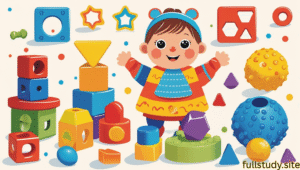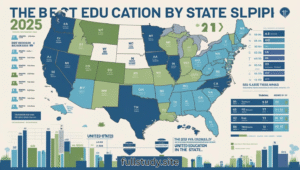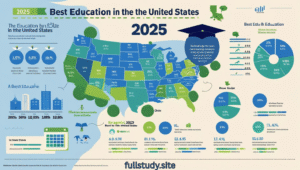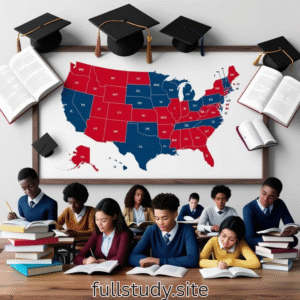Your initial step if you’re driven about molding young brains and having a long-lasting influence in the classroom is an elementary education degree. A successful teaching career depends on selecting the appropriate college since demand for qualified teachers is rising. This article looks at the top American elementary education institutions, what distinguishes these programs, and how to select the one best for your objectives.
Whether your goal is to teach upper elementary or kindergarten, the appropriate course of instruction will provide you with the tools, knowledge, and confidence required to succeed in today’s classrooms.
Why Selecting the Appropriate Elementary Education College Matters
Learning how to teach reading, writing, and arithmetic is only one aspect of elementary education. It’s about knowing child development, classroom management, inclusive environments, and modern teaching approaches. Great programs teach you how to teach rather than only what to teach.
The top primary education colleges present:
Programs for preparedness of accredited teachers
Active classroom experience with hands-on learning
high pass rates for licenses
Mentoring and supporting faculty
Services for career placement
Let us review the top-ranked universities that regularly turn out outstanding primary teachers.
1. Nashville, TN Vanderbilt University, Peabody College
Peabody College at Vanderbilt is routinely ranked among the best universities in the nation. Their curricula for undergraduate and graduate degrees are meant to equip students for demands in primary classrooms.
Why is this notable?
Notable faculty members and research possibilities
High rates of employment.
Close ties to nearby educational institutions
Stressing inclusion, equity, and diversity
Degrees Available: M.Ed., Ed.D., programs; B.S. in Elementary Education
2. University of Madison, Wisconsin
Immersion field experiences and demanding courses are hallmarks of UW–Madison’s School of Education. Students interact closely with seasoned mentors and first encounter classroom environments.
Why is it noteworthy?
Methodologies based on research driven instruction
Solid national and state reputation
Two majors offered—e.g., special education)
Offered degrees: M.S., Ph.D.; B.S. in elementary education
Three: Michigan State University
Long hailed for producing exceptional teachers is MSU’s College of Education. Unlike many other colleges, its approach for teacher preparation consists in a full-year teaching internship.
Why it is noteworthy?
Student teaching placement for a year
Nationally known for creativity
thorough teacher preparation
Degrees Offered: Ph.D.; B.A. in Elementary Education; M.A.
4. Athens, GA University of Georgia (UGA)
Rooted in practice and pedagogy, UGA’s College of Education provides a top-notional primary education program. Graduates eager to lead combine theory with practical knowledge from the classroom.
Why it catches attention:
Certified and much valued
Research overseas possibilities
robust academic alumni network in education
Degrees Offered: M.Ed., Ed.S., Ph.D.; B.S.Ed., in Elementary Education
5. Boston College—Lynch School of Education and Human Development
Boston College offers a whole approach to elementary education. Their liberal arts background combined with practical teacher preparation helps teachers to satisfy the demands of various students.
Why it is noteworthy?
Give service and social justice first priority.
early field trips
Tucked in an urban, varied environment
degrees offered: M.Ed., Ph.D.; B.A./B.S. in Elementary Education.
6. Austin University of Texas
Among leaders in teacher development is UT Austin’s College of Education The program in elementary education stresses equitable teaching strategies and bilingual instruction.
Why it catches attention?
strong will to achieve educational justice
Faculty members with a research orientation
Excellent results on teaching licenses
Degrees Offered: M.Ed., Ed.D., B.S. in Applied Learning and Development.
7. Bloomington’s Indiana University
The Midwest and beyond value IU Bloomington’s School of Education. Their main concentration in elementary education combines thorough coursework with practical teaching practice.
The reason it stands out is
Excellent programs in reading and STEM
Integrated technologies in educational environments
mentoring and active student teaching
Offered degrees: B.S. in elementary education, M.S., Ed.D., Ph.D.
8. University of Florida
Through creative instruction and engaging experiences, the College of Education at University of Florida trains next teachers. In Florida and the southeast of the United States, the initiative enjoys great renown.
Why it catches attention:
Top ratings in studies on education
Program choices both online and in person.
Specifically tailored tools for professional growth
Degrees Available: M.Ed., Ed.S., Ph.D.; B.A.E. in Elementary Education.
9. Arizona State College
Flexibility and creativity are well-known traits of ASU’s Mary Lou Fulton Teachers College. They provide among the biggest and most varied education programs available in the country.
Why it is noteworthy?
Online and combined choices
Stressing student-centered learning
reasonable rates and strong return on investment.
Degrees Offered: M.Ed., Ed.D., Ph.D.; B.A.E. in Elementary Education.
10. Urbana- champaign University of Illinois
For those eager to educate elementary-aged children, UIUC’s College of Education presents a disciplined course of study. They mix empirical approaches with practical instruction.
Why it catches attention:
Support of dedicated academic members
Cooperative agreements with nearby educational institutions
Complete teaching laboratories
Offered degrees: B.S. in elementary education, M.Ed., Ed.D.
What Search for in an Elementary Education Program?
Consider the following important criteria while selecting from the top primary education universities:
1. certification
Always select a university accredited by either CAEP (Council for the Accreditation of Educator Preparation) or another such entity. This guarantees your will to fulfill licencing criteria.
2. Get ready for state certification.
Make sure the program gets you ready for state where you intend to teach for teacher certification.
3. Field Learning
You will be more ready the more actual classroom experience you have. Search for initiatives including early and continuous field trips.
4. Mentoring and Faculty
Your academic and career path can be much changed by great mentoring and faculty assistance.
5. Pass Rate for Licensures
Find out what proportion of students pass tests for state licenses. High rates indicate the success of the program really nicely.
6. Services for Careers
Programs with excellent alumni networks and job placement help will provide you advantage once you graduate.
Online Resources for Elementary Education Degrees
If flexibility is your first concern, there are also highly regarded web courses for future elementary teachers. Many respectable colleges let you manage job, life, and study by offering approved online bachelor’s or master’s degrees in education.
Top Virtual Programs:
Western governors University (WGU)
Online Campus of University of Florida
Liberty University
Online Resources for Arizona State University
The University of North Carolina Wilmington
Those who wish a more flexible learning schedule or who are job changers will find these programs especially helpful.
Graduates in Elementary Education: Career Outlook
The U.S. Bureau of Labor Statistics projects that, with tens of thousands of job openings annually resulting from retirements and school expansions, employment for elementary school teachers is likely to rise roughly 4% through 2032.
Typical Pay:
$61,690/year is the national median.
More in metropolitan and suburban areas.
Extra compensation for certificates and advanced degrees.
Having graduated from one of the top elementary education colleges, you will be ready to get licensed, obtain a job, and start improving the daily life of children from first day.
Final Notes
Selecting one of the top primary education colleges will help you define your whole teaching career. Whether your search is for small class sizes, extensive university resources, or online flexibility, the colleges highlighted here provide first-rate instruction for upcoming elementary teachers.
Start by looking over every program, contacting admissions counselors, and considering your personal and professional objectives. There is a fulfilling and motivating career in education just waiting!
Ad copy—for Google or Meta ads:
Get ready to teach right now!
Research the Best Elementary Education Colleges. Excellent Programs. Professional Teachers Training for Career-Readyness. Now begin your path toward a fulfilling teaching career.
Online and campus options; Certified programs High Employment Rates







